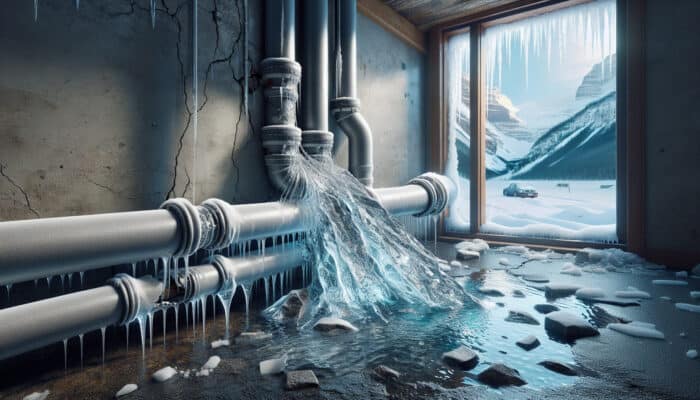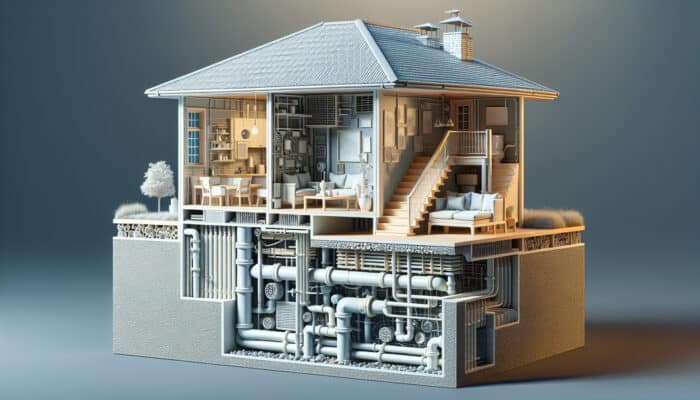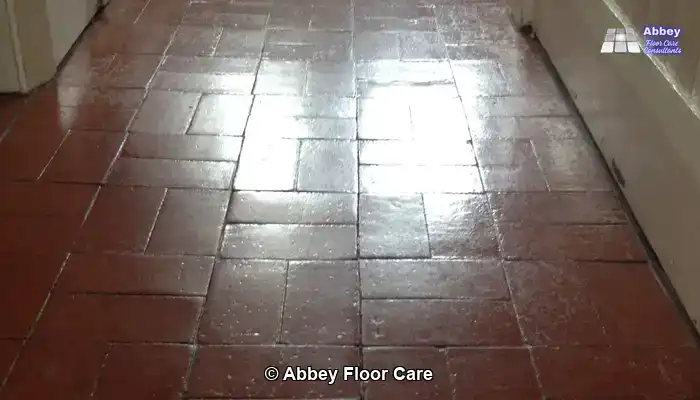Drain flies are more than just a minor nuisance; they can quickly transform your tranquil bathing space into an irritating environment. These tiny, moth-like insects thrive in stagnant water and organic matter that accumulate in drains, which makes them a common problem in both kitchens and bathrooms. Their presence not only disrupts your peace but also indicates potential plumbing issues that need prompt attention. Effectively addressing these underlying problems is essential for maintaining a clean and healthy living environment, which also minimizes the risk of health issues related to infestations. By learning about their habits and preferred habitats, you can take proactive steps to eliminate them and maintain a sanitary space.
Follow This Detailed 6-Step DIY Guide to Effectively Banish Drain Flies
1. Start with an In-Depth Drain Cleaning
Begin your battle against drain flies by conducting a thorough cleaning of your drain walls using a specialized drain brush. This critical initial step is vital because it removes the organic buildup that serves as an ideal breeding ground for these pests. Focus particularly on edges and hard-to-reach areas where debris tends to collect. By ensuring these neglected spaces are cleaned thoroughly, you significantly reduce the likelihood of future infestations while enhancing overall drainage efficiency. Regular maintenance is essential; it not only deters drain flies but also safeguards the health of your plumbing system, promoting both longevity and reliability.
2. Sanitize Your Drains by Flushing with Boiling Water
Next, pour boiling water down the drain to eliminate stubborn debris and larvae that may be lurking. This method not only cleans but also sanitizes the drain, effectively eradicating any potential breeding sources. For optimal results, repeat this hot water flushing daily for several consecutive days to ensure a comprehensive cleansing effect and to eliminate any residual organic material that might attract drain flies. This straightforward yet powerful strategy can significantly reduce the population of these pests in your home.
3. Create a Potent Vinegar and Baking Soda Cleaning Mixture
Mix half a cup of baking soda with half a cup of vinegar and pour this effective mixture into your drain. Allow it to sit undisturbed for several hours, or ideally overnight, to maximize the chemical reaction's effectiveness. The fizzing action generated by this combination will assist in breaking down and dislodging stubborn organic matter. Finally, flush the drain with hot water the next morning to wash away any remaining residues. This natural cleaning method is not only efficient but also environmentally friendly, making it an excellent alternative to harsher chemical solutions.
4. Utilize a Strong Enzyme-Based Commercial Drain Cleaner
Consider using an enzyme-based cleaner designed specifically to break down organic material and eliminate drain flies. Follow the manufacturer's instructions closely and apply the cleaner directly to the affected drains. These specialized products are safe for your plumbing and eco-friendly, providing a powerful solution to persistent organic buildup that attracts these annoying insects. Regular use of enzyme cleaners not only helps prevent future infestations but also keeps your drains functioning optimally, reducing the risk of serious plumbing issues in the future.
5. Craft a Simple DIY Fly Trap to Capture Adult Flies
To effectively capture adult flies, create a simple yet effective trap using a bowl filled with equal parts of vinegar, sugar, and water. Adding a few drops of dish soap reduces the surface tension, making it easier for the flies to become trapped. Place this bowl near the affected drain area to attract and capture any lingering adult flies. This DIY trap will help you monitor and significantly decrease the adult population of drain flies in your home, offering a practical solution to your pest dilemma.
6. Establish a Regular Cleaning Routine for Sustainable Solutions
Consistency is vital when dealing with drain flies. Repeat these cleaning steps every few days to ensure that all larvae and adult flies are thoroughly eliminated. Keep a vigilant eye on your drains for any signs of recurring activity. Regular cleaning not only helps prevent re-infestation but also contributes to the overall health of your plumbing system, ensuring a clean and pest-free environment for you and your loved ones.
Recognizing When to Call in Professional Plumbing Help for Drain Fly Issues
While the DIY methods outlined can effectively manage drain fly problems, persistent issues may indicate more serious underlying plumbing concerns. If you continue to notice drain flies despite your diligent cleaning efforts, or if you detect signs of hidden water leaks or blocked drains, it may be time to seek assistance from a professional plumber. These skilled experts can perform a thorough deep cleaning of your plumbing system and conduct detailed inspections to identify any underlying issues. This proactive approach ensures a long-term resolution to the problem, sparing you from future headaches and costly repairs.
Obtain Expert Support for Your Drain Fly Challenges
Drain flies are a common yet manageable problem that many homeowners face. By identifying the root cause, employing effective cleaning techniques, and maintaining your plumbing system, you can keep your home or business free from these unwelcome pests. However, if the problem persists despite your best efforts, don’t hesitate to contact Jet Plus Plumbing for professional assistance. With expert support and regular maintenance, you can ensure a clean, pest-free environment that fosters comfort, hygiene, and peace of mind.
FAQs: Answers to Your Most Common Questions About Drain Flies
Exploring Drain Flies: What Are They and Why Are They in My Home?
Drain flies, belonging to the Psychodidae family, are tiny insects typically found in areas with stagnant water and organic debris. Often referred to as moth flies due to their fuzzy appearance, these insects have wings covered in hair-like scales and usually measure about 2-5 mm in size. They commonly display grey, black, or tan coloring. Although drain flies do not bite and pose no direct threat to humans, their presence often indicates clogged or unclean drains, which, if neglected, could lead to more significant plumbing issues. Thriving in moist environments such as bathroom sinks, kitchen drains, and floor drains, they lay eggs and feed on decaying organic material. While harmless, their rapid reproduction and potential to spread bacteria make them unwelcome in any household or commercial setting.
How to Confirm the Presence of Drain Flies in Your Home?
Before taking action, it’s essential to verify that you’re dealing with drain flies for effective management. These small, moth-like insects measure approximately 2-5 mm and have fuzzy wings, usually appearing grey or tan. Most active during the evening, they can often be spotted near drains, sinks, or other damp areas. Signs of an infestation include flies buzzing around drains, stagnant water, or moist surfaces, often accompanied by a musty odor. If you suspect their presence but are unsure, a simple test involves placing sticky tape (sticky side down) over the suspected drain overnight; if flies are nearby, they will adhere to the tape, confirming their presence.
What Factors Lead to Drain Fly Infestations and How Can You Prevent Them?
Drain flies flourish in environments characterized by stagnant water and organic debris. Common causes include clogged drains where grease, soap scum, or food particles collect, creating an ideal breeding ground. Additionally, standing water from leaky pipes or unused drains can provide a favorable habitat for these pests. Moreover, decaying organic matter within drains serves as a primary food source for them. By promptly addressing these underlying issues, you can effectively eliminate the flies and prevent future infestations, ensuring that your plumbing system remains in optimal condition.
Understanding the Lifecycle of Drain Flies and Its Role in Infestation
Grasping the lifecycle of drain flies is crucial for effectively targeting their elimination. These insects undergo a complete metamorphosis consisting of four distinct stages: egg, larva, pupa, and adult. Female drain flies lay their eggs in moist environments rich in organic matter, such as clogged drains. The eggs hatch into larvae within 32 to 48 hours, which then feed on the organic buildup for 9 to 15 days before forming a cocoon-like pupa. After 1 to 2 days, adult flies emerge, ready to reproduce. This brief lifecycle allows them to multiply rapidly, making prompt action essential to control their population and prevent extensive infestations in your home.
What Health Risks Are Associated with Drain Flies and How Can You Mitigate Them?
While drain flies do not bite and pose no direct harm to humans, they can still present certain health risks. These insects often breed in unsanitary conditions, such as drains clogged with decaying organic material. Consequently, they can carry and spread bacteria or pathogens that may contaminate surfaces, food, or water, which is particularly concerning in kitchens, bathrooms, and food preparation areas. Additionally, their presence may exacerbate respiratory issues for individuals sensitive to allergens. Keeping drains clean and addressing infestations promptly can help mitigate these potential health risks, ensuring a safe environment for you and your family.
The Article: Get Rid of Drain Flies Effectively and Easily first appeared on https://writebuff.com
The Article Effectively Get Rid of Drain Flies with Simple Solutions Was Found On https://limitsofstrategy.com
The Article Get Rid of Drain Flies Using Simple Solutions First Appeared ON
: https://ad4sc.com















Dalton Alston
Your blog post on drain flies really resonated with me, as I’ve experienced the annoyance of dealing with these pests firsthand. It’s fascinating how such tiny insects can cause such significant disruption in our daily lives, particularly in spaces that are meant to be relaxing. I found it especially interesting that their presence is not just an aesthetic issue, but also a signal of potential plumbing concerns, which is something many people might overlook.